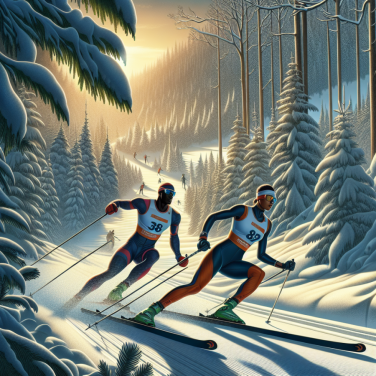Tracing the Origin: The Beginnings of Curling
Curling’s origins can be traced back to late medieval Scotland. It was in the mid-16th century when the earliest references to this intriguing winter sport were recorded. The first concrete evidence of curling is a curling stone inscribed with the year 1511. Simultaneously, there is a painting titled "Winter Landscape with a Bird Trap" from the Flemish painter Pieter Bruegel the Elder, dating around 1565, which depicts a game similar to curling played on frozen ponds.
In the early days, curling was predominantly a social activity and pastime where matches were most likely played on frozen marshlands or ponds. Some of the first curling "stones" were irregularly shaped and were made from various materials, including wooden blocks and frozen clods of earth. Participants, instead of sliding the stone as we see in the modern game, would most probably have hurled their 'stones' along the ice.
As the sport grew in popularity, the shape and size of the curling stone evolved. By the 18th century, curling stones were typically round with a flat base. Another significant evolution was the transition from iron or wooden handles to the type of handles used in the present day. This change improved stability and control during the throw of the stone.
The size and weight of the curling stone also were standardized in the 19th century. The standard set was a maximum weight of 44 pounds (20 kilograms) and a maximum circumference of 36 inches (91 centimeters) for the curling stone.
Curling clubs started to appear in Scottish towns in the early 18th century with the Grand Caledonian Curling Club established in 1838 being pivotal in shaping the sport’s official rules and regulations. Having been granted its royal charter by Queen Victoria—who was captivated by the sport during her visit to Scotland—the club changed its name to The Royal Caledonian Curling Club. This club is considered the mother club of curling and is still responsible for the rules of curling that are practiced internationally.
By the late 19th century, Scottish emigrants had taken the sport to North America, New Zealand, and even Australia, providing the sport with a strong international footprint that continues today. The sport was included in the inaugural Winter Olympic Games in 1924, though it wasn't until 1998 that it gained full medal status.
Read also:
Understanding Cardiac Arrest: Its Prevalence Among Soccer Players
The Transformation: How Curling Evolved Into a Winter Sport Phenomenon
Curling, a winter sport that dates back to sixteenth-century Scotland, has evolved tremendously over centuries. It has grasped the world's attention, particularly the die-hard fans of winter sports and the intrigued audience during the Winter Olympics.
The curling’s transformation started during the 19th century in North America. The sport was introduced to North America by Scottish immigrants but was only popular in Canada as its harsh and cold weather perfectly completed the requirements for an outdoor rink. The Royal Montreal Curling Club, established in 1807, has the honor of being the oldest established sports club still active today. From pick-up games on frozen ponds to organized bonspiels (tournaments) in grand, cathedral-like rinks, the sport has grown in popularity and prestige.
The game’s structure and rules have also transformed over centuries. Curling was initially a game played on frozen ponds, and it involved throwing large rocks across the ice, with the aim of getting closer to a mark on the ice than your competitor. With time, the ice surface got defined and evolved to 146 feet, and the rocks changed to 44 pounds with defined handles for smooth and controlled release. The invention of refrigeration also brought a critical transformation, as it led to the birth of indoor curling, enabling the players to play throughout the year irrespective of the weather conditions outside.
The curling stone also underwent a significant change. Initially, plain rocks were used, which were gradually replaced by carefully crafted stones with uniform weight and size. The Scots expanded the game by using stones made from rare blue hone granite exclusively found from the Island of Ailsa Craig. The stones used today are still made from this granite due to its resistance to water absorption and durability.
The introduction of sweeping was another considerable change in the game. Sweeping done by teammates impacts the stone's direction and the distance it covers. The addition of artificial broom bristles over traditional corn or straw brooms has refined the skill further, demanding much finesse and strength from players.
Another defining transformation was curling's inclusion in the Winter Olympics. Curling was a demonstration sport during the Winter Olympics of 1924 in Chamonix, France, and 1932 in Lake Placid. However, it only became an official sport in the Winter Olympics in 1998 in Nagano, Japan. This international recognition catapulted the sport into the global arena, spurring its growing fan base.




